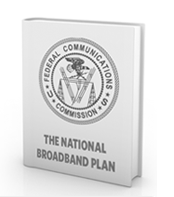Want smarter insights in your inbox? Sign up for our weekly newsletters to get only what matters to enterprise AI, data, and security leaders. Subscribe Now
 Today the FCC finally unveiled the National Broadband Plan, following months of speculation.
Today the FCC finally unveiled the National Broadband Plan, following months of speculation.
The plan — for how to extend internet access to all American citizens — marks the first time that broadband access, and internet access in general, have been given considerable government attention in America. Judging from the executive summary for the plan, it’s clear that the FCC understands the gravity of what it’s doing:
Broadband is the great infrastructure challenge of the early 21st century.
Like electricity a century ago, broadband is a foundation for economic growth, job creation, global competitiveness and a better way of life. It is enabling entire new industries and unlocking vast new possibilities for existing ones. It is changing how we educate children, deliver health care, manage energy, ensure public safety, engage government, and access, organize and disseminate knowledge.
The FCC started work on the plan in April 2009, after Congress charged the agency with producing blueprints for how to grant every American access to the internet — with a notice of inquiry that asked for feedback from the public. The FCC followed that up with 36 public workshops that were streamed online, drawing more than 10,000 attendees, both online and in-person.
The plan was honed further based on replies to 31 public notices, which generated 23,000 comments from more than 700 parties. Coupled with the impressive work on the Broadband.gov web site, and the requisite, very popular Twitter feed, the FCC put admirable effort into getting as many voices heard as possible.
Here’s the upshot: the agency believes it can influence the broadband environment in four ways:
- Design policies to ensure robust competition and, as a result, maximize consumer welfare, innovation and investment.
- Ensure efficient allocation and management of assets the government controls or influences, such as spectrum, poles, and rights-of-way, to encourage network upgrades and competitive entry.
- Reform current universal service mechanisms to support deployment of broadband and voice in high-cost areas; and ensure that low-income Americans can afford broadband; and in addition, support efforts to boost adoption and utilization.
- Reform laws, policies, standards and incentives to maximize the benefits of broadband in sectors government influences significantly, such as public education, health care and government operations.
Notable points include making 500 megahertz of wireless spectrum available over the next ten years, and the creation of the Connect America Fund to support affordable broadband in unserved areas.
The agency also announced six long-term goals that it recommends the country adopt over the next decade. They include: Having affordable access to broadband in 100 million homes, with download speeds of 100 megabits per second, and upload speeds of 50 megabits per second. The U.S. should also lead in mobile innovation, with better wireless networks than any other nation (do you hear that AT&T?). Finally, every community should have access to at least 1 gigabit per second fiber broadband for institutions like schools, hospitals, and government buildings.
While the FCC’s long-term goals sound a lot like wishful thinking right now, it’s important that they have been put on the table. Recognizing the importance of broadband is a long overdue mind-shift for the American government, and a vital one at that.

